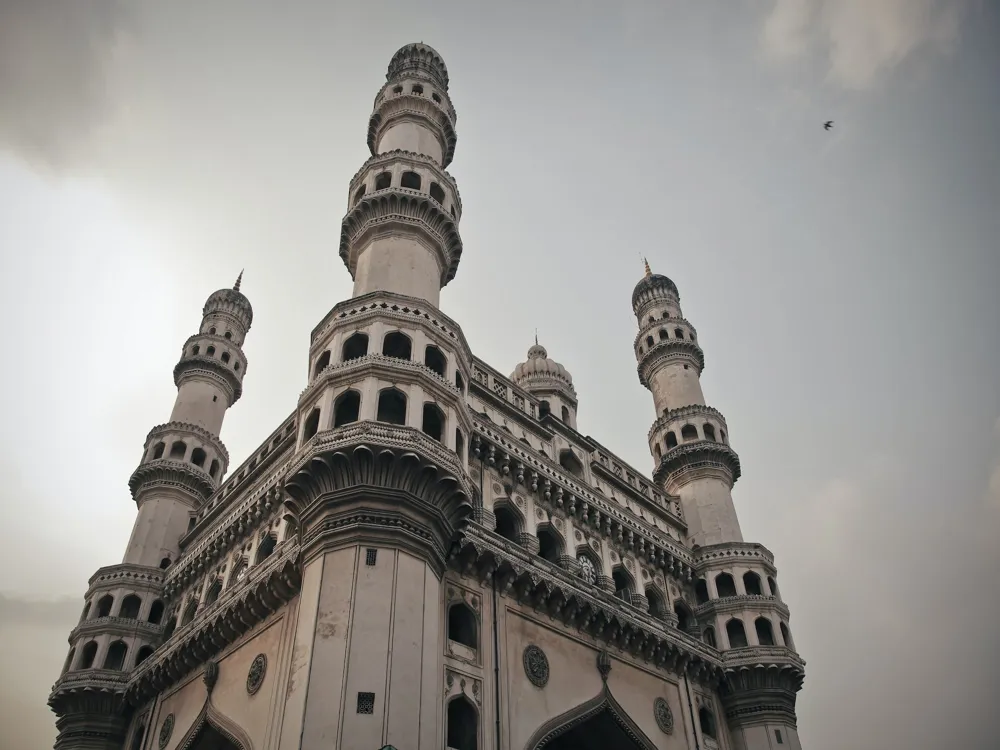Adilabad, a city in the northern region of Telangana, India, is a blend of rich cultural heritage and natural beauty. Known for its lush forests, roaring waterfalls, and diverse wildlife, Adilabad offers a unique experience to its visitors. Historically, it was ruled by various dynasties, each leaving behind a distinct imprint on its cultural fabric. The city is named after Ali Adil Shah, the ruler of the Bijapur Sultanate, reflecting the area's historical significance. The region's demography is a tapestry of various cultures, including Telugu, Marathi, and tribal communities, contributing to its vibrant and diverse cultural landscape. The Godavari River, one of India's most significant rivers, flows through the district, enriching the agricultural lands and shaping the local economy. Adilabad is also known for its handicrafts, especially Nirmal paintings and toys, which are made using traditional techniques passed down through generations. Adilabad is characterized by its varied topography, ranging from dense forests in the north to fertile plains in the south. The district experiences a tropical climate, with hot summers and moderate winters. The monsoon season brings substantial rainfall, transforming the landscape into a lush green paradise. This diverse climate supports a rich variety of flora and fauna, making it a haven for nature lovers and wildlife enthusiasts. The economy of Adilabad is predominantly agricultural, with rice, cotton, and soybeans being the main crops. The city also has a significant presence of the forestry industry, given its rich forest resources. The lifestyle in Adilabad is a harmonious blend of tradition and modernity, with people celebrating festivals and fairs with great enthusiasm, showcasing their rich cultural heritage. Adilabad's population comprises a mix of various ethnic groups, including tribal communities like the Gonds and Kolams. These tribes have a rich cultural heritage, evident in their traditional dances, music, and art forms. Festivals like Nagoba Jatara and Dandari-Gussadi are celebrated with great zeal, displaying the unique cultural mosaic of Adilabad. The architecture of Adilabad is a testament to its historical and cultural significance. Influenced by various dynasties, the architectural styles in Adilabad range from ancient temple complexes to Islamic structures. One can see the blend of Deccan and Persian influences in the architectural designs. Adilabad is home to several ancient temples, each with its unique architectural style. The Kuntala and Pochera Waterfalls, for instance, are not just natural wonders but also house ancient shrines near them, showcasing intricate carvings and stonework. The region has several forts and palaces, remnants of its royal past. These structures, built primarily during the reigns of the Mughal and Nizam dynasties, display a fusion of Indo-Islamic architecture, characterized by domes, arches, and intricate embellishments. Islamic influence is evident in many structures, including mosques and mausoleums. These buildings are known for their geometric patterns, calligraphy, and the use of jali (lattice screens), reflecting the Islamic architectural ethos. The tribal communities in Adilabad have their unique architectural style, seen in their huts and dwellings. Made from locally sourced materials like bamboo, mud, and grass, these structures are eco-friendly and sustainable, reflecting the tribes' deep connection with nature. In recent years, Adilabad has seen modern architectural developments, blending traditional styles with contemporary design. This amalgamation is evident in public buildings, educational institutions, and infrastructure projects, signifying the city's growth and development. The ideal time to visit Adilabad is between October and March when the weather is pleasant, and the natural beauty is at its peak post-monsoon. Don't miss trying the local cuisine, which is a blend of Telugu and Marathi flavors. Dishes like Jonna Roti, Sarva Pindi, and sweets like Madugula Halwa are a must-try. Adilabad offers various accommodation options, from luxury hotels to budget stays, ensuring comfort for all kinds of travelers. Adilabad is well-connected by road and rail. Hiring a cab or using local transport like buses and autos is the most convenient way to explore the city. It's important to respect the local culture and traditions, especially when visiting tribal areas or religious sites. Reaching Adilabad is convenient, with the city being well-connected to major cities in India. The nearest airport is at Hyderabad, about 280 kilometers away. Adilabad has its railway station, and the extensive road network makes it accessible by bus or car from neighboring states and cities. The nearest airport is Rajiv Gandhi International Airport in Hyderabad, followed by a road trip to Adilabad. Adilabad has a railway station, connecting it to major cities in India. Regular bus services and well-maintained roads make Adilabad easily reachable from nearby cities like Nagpur, Hyderabad, and Nizamabad. Read More:Overview of Adilabad, Telangana
Geography and Climate
Economy and Lifestyle
Demographics and Culture
Architecture of Adilabad
Ancient Temples
Forts and Palaces
Islamic Architecture
Tribal Architecture
Modern Developments
Tips When Visiting Adilabad
Best Time to Visit
Local Cuisine
Accommodation
Transportation
Respect Local Culture
How To Reach Adilabad
By Air
By Train
By Road
Kunthala Waterfalls
Adilabad
Telangana
NaN onwards
View adilabad Packages
Weather :
Label : Must Visit
Tags : Waterfall
Time Duration : 1-2 Hours
Planning a Trip? Ask Your Question
Adilabad Travel Packages
View All Packages For Adilabad
Top Hotel Collections for Adilabad

Private Pool

Luxury Hotels

5-Star Hotels

Pet Friendly
Top Hotels Near Adilabad
Other Top Ranking Places In Adilabad
View All Places To Visit In adilabad
View adilabad Packages
Weather :
Label : Must Visit
Tags : Waterfall
Time Duration : 1-2 Hours
Planning a Trip? Ask Your Question
Adilabad Travel Packages
View All Packages For Adilabad
Top Hotel Collections for Adilabad

Private Pool

Luxury Hotels

5-Star Hotels

Pet Friendly






















